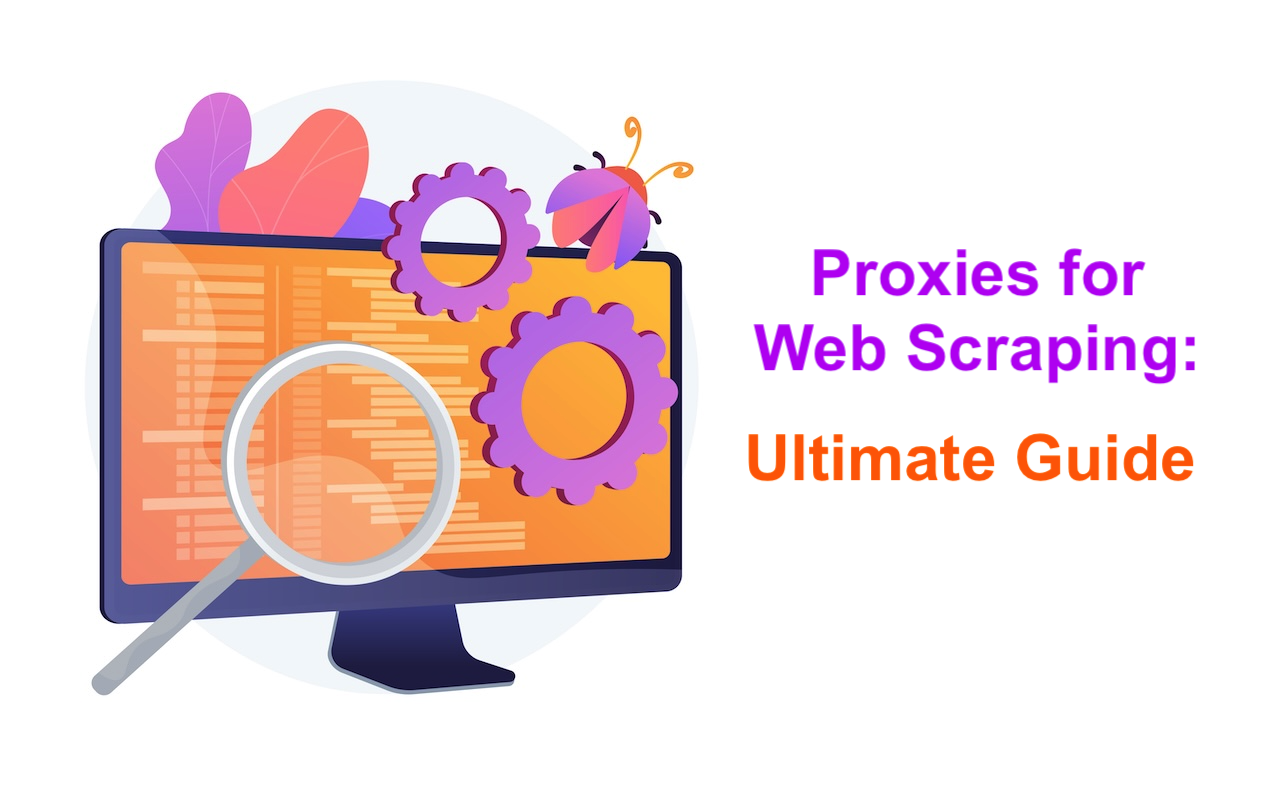
Businesses rely heavily on web scraping to collect valuable insights whether for market research, SEO tracking, eCommerce analytics, or competitive intelligence. But scraping the web directly from a single IP is risky. Websites use detection systems that can block requests, throttle traffic, or trigger CAPTCHAs.
That’s where proxies come in. They act as digital shields, ensuring uninterrupted, anonymous, and efficient scraping operations. In fact, according to Bright Data’s 2024 Data Automation Report, over 65% of enterprise-level data teams depend on proxy networks to scale data collection securely.
What Is a Proxy and How Does It Work?
A proxy server functions as an intermediary between your web scraper and the target website. Instead of connecting directly, your requests first go through the proxy, which assigns a different IP address before reaching the site.
This process masks your real identity and distributes traffic across multiple IPs, allowing your scraper to appear as many different users instead of one.
Simple flow:
Scraper → Proxy Server → Target Website → Proxy → Scraper
By doing so, proxies help prevent IP bans, enable location targeting, and ensure you can extract data efficiently without being flagged as a bot.
Why Web Scrapers Need Proxies
Without proxies, large-scale scraping operations quickly run into problems:
- IP bans from sending too many requests.
- Geo-restrictions that limit access to region-specific content.
- Anti-bot algorithms that flag repetitive behavior.
Proxies address these issues by:
- Randomizing IPs through rotation, so each request looks new.
- Providing geo-targeted access for localized data collection.
- Enabling scalable scraping, where thousands of requests can run in parallel.
According to DataDome, implementing proxy rotation can reduce blocking rates by up to 80%, making data extraction more consistent and accurate.
Types of Proxies for Web Scraping
Understanding proxy types is essential for selecting the right setup:
| Proxy Type | Speed | Anonymity | Best Use Case |
|---|---|---|---|
| Residential | Medium | Very High | eCommerce, travel, localized scraping |
| Datacenter | Very High | Medium | SEO, rank tracking, high-speed scraping |
| Mobile | Medium | Very High | Social media and app automation |
| Rotating | High | Very High | Large-scale scraping and bypassing bans |
| Static | High | Low | Login-based or session-dependent scraping |
Residential proxies use real IPs from Internet Service Providers (ISPs), making them appear as genuine users. Datacenter proxies, on the other hand, offer speed and reliability at lower costs but are easier to detect.
Mobile proxies are excellent for simulating user activity on apps or mobile browsers. Rotating proxies—often built from residential pools—automatically cycle through IPs, keeping scrapers anonymous and unblocked.
How Proxy Rotation Works
Proxy rotation is a process where your scraper switches IP addresses periodically—either per request or after a time interval—to avoid detection.
Rotation triggers can include:
- Time-based rotation (e.g., every 30 seconds).
- Request-based rotation (each HTTP request uses a new IP).
- Error-based rotation (switch IPs upon receiving a block or CAPTCHA).
According to Proxyway’s 2024 benchmark study, scrapers that use rotating proxies achieve up to 90% higher success rates compared to static setups.
Choosing the Right Proxy for Your Project
The best proxy depends on your scraping goals:
- ECommerce Analytics: Residential or rotating proxies for price monitoring, product listings, and reviews.
- SEO Tracking: Datacenter proxies for keyword ranking, backlink analysis, and competitor site audits.
- Social Media Monitoring: Mobile proxies to manage accounts, collect engagement data, or run ad research.
- Travel Aggregation: Residential proxies for fetching region-specific hotel and airfare data.
When selecting a provider, consider IP pool size, geographic diversity, rotation frequency, and speed reliability. Popular networks such as Decodo, and Oxylabs maintain massive IP infrastructures suitable for enterprise-level data extraction.
Best Practices for Using Proxies in Scraping
- Rotate IPs intelligently: Over-rotation can raise red flags.
- Respect target sites’ limits: Follow fair request intervals to avoid detection.
- Randomize user-agents and headers: Mimic real browser behavior.
- Combine with headless browsers: Use tools like Playwright or Selenium for dynamic sites.
- Monitor IP health: Replace slow or blacklisted IPs regularly.
- Use error handling: Implement automatic retries and failover proxies.
These techniques help scrapers achieve both speed and stealth, maintaining stability during long-term data collection.
Legal and Ethical Considerations
While proxies enhance scraping efficiency, it’s important to operate responsibly:
- Always respect robots.txt and site terms of service.
- Avoid collecting personal or sensitive information.
- Focus on publicly available or business-use data.
In 2025, data compliance frameworks like the EU Digital Services Act and U.S. AI Data Transparency laws are making ethical scraping more important than ever. Responsible use ensures long-term sustainability of data collection practices.
Troubleshooting Common Proxy Issues
- Slow Response Times: Switch to datacenter proxies or reduce concurrency.
- Frequent Blocks: Adjust rotation frequency or add CAPTCHA solvers.
- Inconsistent Data: Use session persistence when scraping login-required pages.
- Authentication Errors: Check API credentials and whitelist IPs if necessary.
Most providers, including Decodo and Webshare, offer dashboards to monitor IP status, request history, and success rates — simplifying maintenance and scaling.
Conclusion
Proxies are the backbone of reliable web scraping, empowering businesses to gather accurate, large-scale data safely and efficiently. Whether you’re tracking competitors, analyzing SEO trends, or aggregating prices, choosing the right proxy type determines your success.
By combining robust proxy networks, smart rotation strategies, and responsible scraping ethics, organizations can turn the open web into a powerful, compliant data resource.
Featured Image by Freepik.
Share this post
Leave a comment
All comments are moderated. Spammy and bot submitted comments are deleted. Please submit the comments that are helpful to others, and we'll approve your comments. A comment that includes outbound link will only be approved if the content is relevant to the topic, and has some value to our readers.

Comments (0)
No comment